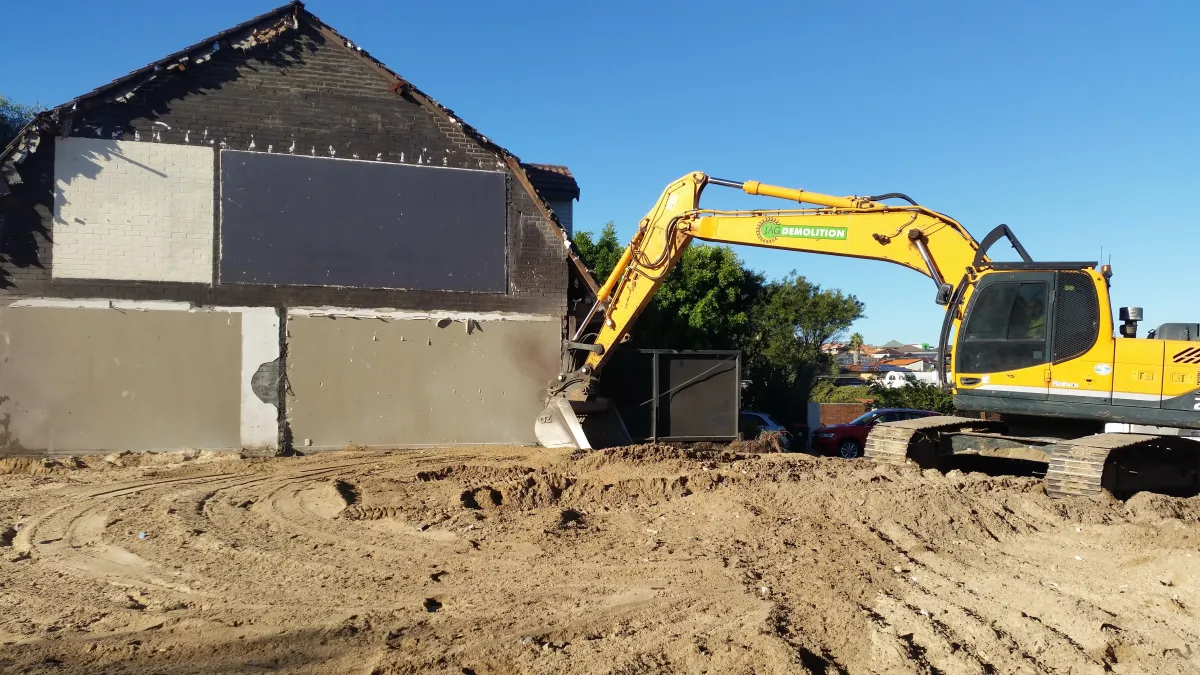
Stabilising Damaged Structures in Perth, Australia
Stabilise Damaged Structures Perth, Australia: A Comprehensive Guide
Why Stabilising Damaged Structures is Important
Structural damage can occur because of various factors such as natural disasters or human activities. Whatever the cause might be, it is important to stabilise the damaged structures to prevent further harm and ensure safety. Stabilising damaged structures involves reinforcing the foundation and other structural elements of a building.
This process helps to prevent further collapse or deterioration while improving the overall safety of the structure. The importance of stabilization cannot be overstated, especially in areas prone to natural disasters such as earthquakes or floods.
A structurally weak building can pose significant risks for its occupants and neighbours alike. In addition, if left unchecked, it also leads to more extensive damages that require expensive repairs in the long run.
Defining Stabilising Damaged Structures
Stabilizing damaged structures refers to the process of repairing and reinforcing buildings that have suffered from structural damage caused by natural disasters or human activities. Structural damage may occur due to various factors such as poor construction practices, wear and tear over a period of time, or unexpected events like earthquakes.
This process typically involves assessing the extent of damage and designing appropriate solutions for repairing weakened structural elements that support a building's weight. Depending on the severity of the damage, methods such as underpinning or concrete injection may be used.
An Overview of Stabilising Damaged Structures in Perth.
Perth is one of Australia's most populous cities with several high-rise buildings and residential properties. Although this city isn't an earthquake-prone zone like some other parts of Australia, it still experiences intense weather conditions that could lead to structural damage over time.
It is crucial for property owners in Perth to understand how critical it is to stabilize any damaged structure to prevent further damage and ensure the safety of occupants. In this comprehensive guide, we will explore the various methods involved in stabilizing damaged structures and how they can help protect your property investment in Perth.
Causes of Structural Damage
Natural Disasters
Australia is a country that is highly prone to natural disasters. Earthquakes and tremors can cause structural damage to buildings. An earthquake is caused by the movement of tectonic plates beneath the ground, which can cause serious shaking, leading to cracks and structural damage in buildings.
Buildings that are not designed according to earthquake-resistant standards are susceptible to severe damage. Another natural disaster that can cause structural damage is flooding.
Perth has experienced numerous instances of flooding in recent years. When floodwaters enter a building, they can weaken its foundation and cause other damage due to water exposure.
Human Activities
Poor construction practices are common causes of structural damage in buildings. These include using low-quality materials, ignoring load-bearing specifications, or inadequate reinforcement of walls and foundations. Any shortcuts taken during the construction process can lead to long-term issues for a building's stability.
Wear and tear from normal usage over time can also contribute to the gradual degradation of a building's structure. This includes environmental factors such as weathering or chemical exposure, as well as usage patterns like heavy machinery traffic or constant vibration from trains passing nearby.
Structural damage caused by human activities should not be underestimated, as it can be just as severe as natural disasters' effects on buildings if left unaddressed. It is important for property owners in Perth to be aware of these potential causes and take preventative measures where possible.
Signs of Structural Damage
Structural damage is a significant concern for building owners. The earlier you detect structural damage, the better your chances are at repairing it and preventing further damage. Building owners, therefore, need to be vigilant for any signs of structural damage.
Cracks on Walls, Floors, or Ceilings
One of the most common signs of structural damage is cracks in walls, floors, or ceilings. Cracks can appear due to natural aging or wear and tear in buildings or because of significant events like earthquakes and storms. Small cracks may not be an immediate concern; however, larger cracks could indicate serious structural problems such as a weak foundation or unstable walls.
Horizontal cracks running across walls are also a cause for alarm as they usually indicate that the walls' weight is unevenly distributed which could result in the collapse of those areas if left unchecked. Vertical wall cracks can occur due to soil movement around foundations leading to settling foundations that require immediate attention.
Uneven Foundation or Floors
Another sign of potential structural damage is uneven foundations or floors. Uneven foundations typically occur when there are changes in the soil structure beneath a building's foundation.
This condition often leads to warped flooring and creates gaps between floors and walls. The weight-bearing capacity of these structures will be decreased significantly once this occurs; hence it's crucial to address them early on before they compromise your safety.
Sagging Roof or Walls
Sagging roofs and walls are yet another sign that there may be an issue with your building's structure. Sagging roofs typically occur when there is water penetration within the roof cavities, causing wood rot that weakens support beams over time until they become incapable of supporting their own weight let alone additional roofing material. Similarly with sagging walls - when you see bulges forming beneath windows it indicates that the wall is under strain from soil movement, wind, or water retention behind walls.
Detecting early signs of structural damage can help prevent further damage to your property. Ensure to regularly inspect your building and engage qualified professionals to repair any discovered damage in a timely manner.
Methods for Stabilising Damaged Structures
Underpinning Method
Underpinning is an engineering method used to stabilize a building’s foundation. It involves strengthening existing foundations or deepening them to support new loads.
Underpinning also helps to prevent further structural damage to the building. There are several types of underpinning methods, including mass concrete underpinning, bored piling underpinning, screw pile underpinning, micro piling underpinning, and resin injection grouting.
Mass Concrete Underpinning Method
Mass concrete underpinning is a traditional method that has been used for many years. With this method, the soil beneath the existing foundation is removed in stages and filled with concrete in its place.
This strengthens the foundation and prevents further sinking or shifting of the structure. The process begins by excavating small sections beneath the existing foundation in sequential order.
Once it’s done, steel reinforcements are placed into these holes and then filled with concrete. The concrete settles into the space created by excavation and strengthens the soil beneath the foundation.
Bored Piling Underpinning Method
Bored piling underpinning is another effective way to stabilize a damaged structure. With this method, holes are drilled deep into the ground until they reach stable soil layers where piles can be installed via drilling rigs. Bored piling works by creating new piles that sit underneath or alongside existing foundations to provide additional support for structures that have shifted or settled over time due to unstable soils or other causes.
Screw Pile Underpinning Method
Screw pile underpinnings are ideal when dealing with loose soils or other unstable ground conditions where conventional methods may not be suitable. Screw piles use hollow steel tubes filled with helical blades at their base that screw into soft soils until they reach a stable layer underneath. The piles are then filled with concrete to provide additional support for the building.
Screw pile underpinning is an efficient and cost-effective method that requires minimal excavation. It is also eco-friendly as it produces less waste than other methods.
Micro Piling Underpinning Method
Micro piling underpinning is a technique used where traditional methods cannot be applied because of space or access limitations. With this method, small piles are installed at close intervals beneath the existing foundation.
The process involves drilling small holes into the soil beneath the foundation and filling them with steel reinforcing rods. These rods transfer the weight of the structure to a deeper layer of soil, providing additional support and stabilization.
Resin Injection Grouting Method
Resin injection grouting is a method that involves injecting resin into areas surrounding damaged structures. With this method, an epoxy resin mixture is pumped into voids or cracks in foundations or walls.
This strengthens and stabilizes the affected area by bonding loose soil particles together. This technique can be used in conjunction with other underpinning methods to provide additional support for structures that have experienced significant damage due to natural disasters or human activities such as poor construction practices or wear and tear over time.
These different stabilization methods can extend the life span of a building structure, increase its value, improve its safety, and prevent further damage from occurring. It’s important to consult with structural engineering professionals before determining which method will work best for your specific needs as each method has its own advantages and disadvantages depending on your situation.
Advantages of Stabilising Damaged Structures in Perth.
Extends the Life Span of the Building Structure
Stabilizing a damaged structure is an investment that extends the life span of the building structure. By stabilizing a damaged structure, you are preventing further damage and ensuring that your structure can withstand any future natural or human-made damage.
The process of stabilization involves reinforcing the foundation of your building and fixing any structural damage. This ensures that your building will continue to stand tall for many years to come.
The stability gained from this process also helps to ensure that your building remains safe for its occupants. The structural integrity of a building is crucial in keeping people safe from harm.
When a building is unstable, it can be dangerous and risky to occupy. However, when you stabilize a damaged structure, you are ensuring that it remains safe for everyone who uses it.
Increases the Value of Property
Stabilizing damaged property not only extends its life span but also increases its value. A structurally stable property is worth more on the market than a damaged one. An unstable structure may deter buyers or renters as they may perceive it as unsafe or prone to collapse.
Stabilizing your property helps increase its appeal and makes it attractive to potential buyers or renters, increasing its market value. By creating a sturdy foundation for your property, stabilization ensures that buyers feel confident in their purchase decision and are more likely to invest in buying or renting.
Improves Overall Appearance
Damaged structures often have visible signs like cracks on walls or uneven floors; these can make them look unsightly and unappealing. Stabilization improves not just the structural integrity but also improves overall appearance by making these damages disappear.
The process involves repairing cracks in walls, ceilings, and floors; leveling out any uneven surfaces, which not only improves the structure but also gives your building a much-needed facelift. This process can help make your property more aesthetically pleasing, which is a considerable benefit for those looking to sell or rent their property.
Conclusion
Stabilizing damaged structures in Perth is an investment that offers substantial benefits to property owners. It extends the life of the building structure, increases its value, and improves its overall appearance.
It’s a wise decision to stabilize your damaged structure as it will help you avoid costly repairs down the road and ensure that your property remains safe for occupants. The process of stabilization is a complex one and requires expert skills to achieve positive results.
If you're looking to stabilize your damaged structure in Perth, it's best to consult with professional contractors who have extensive experience in this field. Stabilizing damaged structures is an investment that pays off both immediately and in the long run- making it an ideal solution for those looking to maintain their properties' structural integrity while improving their value and appeal.
Over 30 years Experience
Qualified & Licenced
Fully Insured
Get in touch with our team of experts to know our demolition process.
